[English] 日本語
 Yorodumi
Yorodumi- EMDB-70072: Transmembrane domains of the human sweet receptor (TAS1R2 + TAS1R... -
+ Open data
Open data
- Basic information
Basic information
| Entry |  | |||||||||
|---|---|---|---|---|---|---|---|---|---|---|
| Title | Transmembrane domains of the human sweet receptor (TAS1R2 + TAS1R3) from Class 3 particles (rigidly fitted from PDB:9NOX and 9NOR) | |||||||||
 Map data Map data | ||||||||||
 Sample Sample |
| |||||||||
 Keywords Keywords | Sweet / taste / receptor / GPCR / TAS1R2 / TAS1R3 / T1R2 / T1R3 / HYDROLASE-IMMUNE SYSTEM complex / human | |||||||||
| Function / homology |  Function and homology information Function and homology informationsweet taste receptor complex / detection of chemical stimulus involved in sensory perception of sweet taste / sweet taste receptor activity / taste receptor activity / sensory perception of umami taste / sensory perception of sweet taste / Class C/3 (Metabotropic glutamate/pheromone receptors) / positive regulation of cytokinesis / PKA activation in glucagon signalling / developmental growth ...sweet taste receptor complex / detection of chemical stimulus involved in sensory perception of sweet taste / sweet taste receptor activity / taste receptor activity / sensory perception of umami taste / sensory perception of sweet taste / Class C/3 (Metabotropic glutamate/pheromone receptors) / positive regulation of cytokinesis / PKA activation in glucagon signalling / developmental growth / hair follicle placode formation / D1 dopamine receptor binding / intracellular transport / vascular endothelial cell response to laminar fluid shear stress / renal water homeostasis / activation of adenylate cyclase activity / Hedgehog 'off' state / adenylate cyclase-activating adrenergic receptor signaling pathway / cellular response to glucagon stimulus / regulation of insulin secretion / adenylate cyclase activator activity / trans-Golgi network membrane / negative regulation of inflammatory response to antigenic stimulus / G protein-coupled receptor activity / bone development / platelet aggregation / G-protein beta/gamma-subunit complex binding / cognition / Olfactory Signaling Pathway / Activation of the phototransduction cascade / adenylate cyclase-activating G protein-coupled receptor signaling pathway / G beta:gamma signalling through PLC beta / Presynaptic function of Kainate receptors / Thromboxane signalling through TP receptor / G protein-coupled acetylcholine receptor signaling pathway / Activation of G protein gated Potassium channels / Inhibition of voltage gated Ca2+ channels via Gbeta/gamma subunits / G-protein activation / Prostacyclin signalling through prostacyclin receptor / G beta:gamma signalling through CDC42 / Glucagon signaling in metabolic regulation / G beta:gamma signalling through BTK / Synthesis, secretion, and inactivation of Glucagon-like Peptide-1 (GLP-1) / ADP signalling through P2Y purinoceptor 12 / photoreceptor disc membrane / Sensory perception of sweet, bitter, and umami (glutamate) taste / Glucagon-type ligand receptors / Adrenaline,noradrenaline inhibits insulin secretion / Vasopressin regulates renal water homeostasis via Aquaporins / Glucagon-like Peptide-1 (GLP1) regulates insulin secretion / G alpha (z) signalling events / sensory perception of smell / cellular response to catecholamine stimulus / ADP signalling through P2Y purinoceptor 1 / ADORA2B mediated anti-inflammatory cytokines production / G beta:gamma signalling through PI3Kgamma / adenylate cyclase-activating dopamine receptor signaling pathway / Cooperation of PDCL (PhLP1) and TRiC/CCT in G-protein beta folding / GPER1 signaling / Inactivation, recovery and regulation of the phototransduction cascade / cellular response to prostaglandin E stimulus / G-protein beta-subunit binding / heterotrimeric G-protein complex / G alpha (12/13) signalling events / sensory perception of taste / extracellular vesicle / signaling receptor complex adaptor activity / Thrombin signalling through proteinase activated receptors (PARs) / positive regulation of cold-induced thermogenesis / retina development in camera-type eye / G protein activity / GTPase binding / Ca2+ pathway / fibroblast proliferation / High laminar flow shear stress activates signaling by PIEZO1 and PECAM1:CDH5:KDR in endothelial cells / G alpha (i) signalling events / G alpha (s) signalling events / phospholipase C-activating G protein-coupled receptor signaling pathway / G alpha (q) signalling events / Hydrolases; Acting on acid anhydrides; Acting on GTP to facilitate cellular and subcellular movement / Ras protein signal transduction / Extra-nuclear estrogen signaling / cell population proliferation / receptor complex / G protein-coupled receptor signaling pathway / lysosomal membrane / GTPase activity / synapse / GTP binding / protein-containing complex binding / Golgi apparatus / signal transduction / extracellular exosome / metal ion binding / membrane / plasma membrane / cytoplasm / cytosol Similarity search - Function | |||||||||
| Biological species |  Homo sapiens (human) / Homo sapiens (human) /  | |||||||||
| Method | single particle reconstruction / cryo EM / Resolution: 3.0 Å | |||||||||
 Authors Authors | Juen Z / Lu Z / Yu R / Chang AN / Wang B / Fitzpatrick AWP / Zuker CS | |||||||||
| Funding support |  United States, 1 items United States, 1 items
| |||||||||
 Citation Citation |  Journal: Cell / Year: 2025 Journal: Cell / Year: 2025Title: The structure of human sweetness. Authors: Zhang Juen / Zhengyuan Lu / Ruihuan Yu / Andrew N Chang / Brian Wang / Anthony W P Fitzpatrick / Charles S Zuker /  Abstract: In humans, the detection and ultimately the perception of sweetness begin in the oral cavity, where taste receptor cells (TRCs) dedicated to sweet-sensing interact with sugars, artificial sweeteners, ...In humans, the detection and ultimately the perception of sweetness begin in the oral cavity, where taste receptor cells (TRCs) dedicated to sweet-sensing interact with sugars, artificial sweeteners, and other sweet-tasting chemicals. Human sweet TRCs express on their cell surface a sweet receptor that initiates the cascade of signaling events responsible for our strong attraction to sweet stimuli. Here, we describe the cryo-electron microscopy (cryo-EM) structure of the human sweet receptor bound to two of the most widely used artificial sweeteners-sucralose and aspartame. Our results reveal the structural basis for sweet detection, provide insights into how a single receptor mediates all our responses to such a wide range of sweet-tasting compounds, and open up unique possibilities for designing a generation of taste modulators informed by the structure of the human receptor. | |||||||||
| History |
|
- Structure visualization
Structure visualization
| Supplemental images |
|---|
- Downloads & links
Downloads & links
-EMDB archive
| Map data |  emd_70072.map.gz emd_70072.map.gz | 161.6 MB |  EMDB map data format EMDB map data format | |
|---|---|---|---|---|
| Header (meta data) |  emd-70072-v30.xml emd-70072-v30.xml emd-70072.xml emd-70072.xml | 22.9 KB 22.9 KB | Display Display |  EMDB header EMDB header |
| Images |  emd_70072.png emd_70072.png | 45.3 KB | ||
| Filedesc metadata |  emd-70072.cif.gz emd-70072.cif.gz | 7.5 KB | ||
| Others |  emd_70072_half_map_1.map.gz emd_70072_half_map_1.map.gz emd_70072_half_map_2.map.gz emd_70072_half_map_2.map.gz | 301.4 MB 301.4 MB | ||
| Archive directory |  http://ftp.pdbj.org/pub/emdb/structures/EMD-70072 http://ftp.pdbj.org/pub/emdb/structures/EMD-70072 ftp://ftp.pdbj.org/pub/emdb/structures/EMD-70072 ftp://ftp.pdbj.org/pub/emdb/structures/EMD-70072 | HTTPS FTP |
-Validation report
| Summary document |  emd_70072_validation.pdf.gz emd_70072_validation.pdf.gz | 727.6 KB | Display |  EMDB validaton report EMDB validaton report |
|---|---|---|---|---|
| Full document |  emd_70072_full_validation.pdf.gz emd_70072_full_validation.pdf.gz | 727.1 KB | Display | |
| Data in XML |  emd_70072_validation.xml.gz emd_70072_validation.xml.gz | 17.1 KB | Display | |
| Data in CIF |  emd_70072_validation.cif.gz emd_70072_validation.cif.gz | 20.5 KB | Display | |
| Arichive directory |  https://ftp.pdbj.org/pub/emdb/validation_reports/EMD-70072 https://ftp.pdbj.org/pub/emdb/validation_reports/EMD-70072 ftp://ftp.pdbj.org/pub/emdb/validation_reports/EMD-70072 ftp://ftp.pdbj.org/pub/emdb/validation_reports/EMD-70072 | HTTPS FTP |
-Related structure data
| Related structure data | 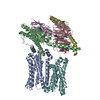 9o38MC 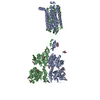 9norC  9nosC  9notC 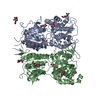 9nouC  9novC  9nowC 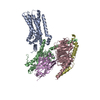 9noxC 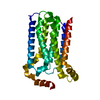 9noyC M: atomic model generated by this map C: citing same article ( |
|---|---|
| Similar structure data | Similarity search - Function & homology  F&H Search F&H Search |
- Links
Links
| EMDB pages |  EMDB (EBI/PDBe) / EMDB (EBI/PDBe) /  EMDataResource EMDataResource |
|---|---|
| Related items in Molecule of the Month |
- Map
Map
| File |  Download / File: emd_70072.map.gz / Format: CCP4 / Size: 325 MB / Type: IMAGE STORED AS FLOATING POINT NUMBER (4 BYTES) Download / File: emd_70072.map.gz / Format: CCP4 / Size: 325 MB / Type: IMAGE STORED AS FLOATING POINT NUMBER (4 BYTES) | ||||||||||||||||||||||||||||||||||||
|---|---|---|---|---|---|---|---|---|---|---|---|---|---|---|---|---|---|---|---|---|---|---|---|---|---|---|---|---|---|---|---|---|---|---|---|---|---|
| Projections & slices | Image control
Images are generated by Spider. | ||||||||||||||||||||||||||||||||||||
| Voxel size | X=Y=Z: 0.823 Å | ||||||||||||||||||||||||||||||||||||
| Density |
| ||||||||||||||||||||||||||||||||||||
| Symmetry | Space group: 1 | ||||||||||||||||||||||||||||||||||||
| Details | EMDB XML:
|
-Supplemental data
-Half map: #1
| File | emd_70072_half_map_1.map | ||||||||||||
|---|---|---|---|---|---|---|---|---|---|---|---|---|---|
| Projections & Slices |
| ||||||||||||
| Density Histograms |
-Half map: #2
| File | emd_70072_half_map_2.map | ||||||||||||
|---|---|---|---|---|---|---|---|---|---|---|---|---|---|
| Projections & Slices |
| ||||||||||||
| Density Histograms |
- Sample components
Sample components
-Entire : Transmembrane domains of the Human sweet receptor (TAS1R2 + TAS1R3)
| Entire | Name: Transmembrane domains of the Human sweet receptor (TAS1R2 + TAS1R3) |
|---|---|
| Components |
|
-Supramolecule #1: Transmembrane domains of the Human sweet receptor (TAS1R2 + TAS1R3)
| Supramolecule | Name: Transmembrane domains of the Human sweet receptor (TAS1R2 + TAS1R3) type: complex / ID: 1 / Parent: 0 / Macromolecule list: all |
|---|---|
| Source (natural) | Organism:  Homo sapiens (human) Homo sapiens (human) |
-Macromolecule #1: Taste receptor type 1 member 3,Guanine nucleotide-binding protein...
| Macromolecule | Name: Taste receptor type 1 member 3,Guanine nucleotide-binding protein G(s) subunit alpha isoforms short type: protein_or_peptide / ID: 1 / Number of copies: 2 / Enantiomer: LEVO EC number: Hydrolases; Acting on acid anhydrides; Acting on GTP to facilitate cellular and subcellular movement |
|---|---|
| Source (natural) | Organism:  Homo sapiens (human) Homo sapiens (human) |
| Molecular weight | Theoretical: 124.469336 KDa |
| Recombinant expression | Organism:  Homo sapiens (human) Homo sapiens (human) |
| Sequence | String: MKTIIALSYI FCLVFADYKD DDDKAAAAPL CLSQQLRMKG DYVLGGLFPL GEAEEAGLRS RTRPSSPVCT RFSSNGLLWA LAMKMAVEE INNKSDLLPG LRLGYDLFDT CSEPVVAMKP SLMFLAKAGS RDIAAYCNYT QYQPRVLAVI GPHSSELAMV T GKFFSFFL ...String: MKTIIALSYI FCLVFADYKD DDDKAAAAPL CLSQQLRMKG DYVLGGLFPL GEAEEAGLRS RTRPSSPVCT RFSSNGLLWA LAMKMAVEE INNKSDLLPG LRLGYDLFDT CSEPVVAMKP SLMFLAKAGS RDIAAYCNYT QYQPRVLAVI GPHSSELAMV T GKFFSFFL MPQVSYGASM ELLSARETFP SFFRTVPSDR VQLTAAAELL QEFGWNWVAA LGSDDEYGRQ GLSIFSALAA AR GICIAHE GLVPLPRADD SRLGKVQDVL HQVNQSSVQV VLLFASVHAA HALFNYSISS RLSPKVWVAS EAWLTSDLVM GLP GMAQMG TVLGFLQRGA QLHEFPQYVK THLALATDPA FCSALGEREQ GLEEDVVGQR CPQCDCITLQ NVSAGLNHHQ TFSV YAAVY SVAQALHNTL QCNASGCPAQ DPVKPWQLLE NMYNLTFHVG GLPLRFDSSG NVDMEYDLKL WVWQGSVPRL HDVGR FNGS LRTERLKIRW HTSDNQKPVS RCSRQCQEGQ VRRVKGFHSC CYDCVDCEAG SYRQNPDDIA CTFCGQDEWS PERSTR CFR RRSRFLAWGE PAVLLLLLLL SLALGLVLAA LGLFVHHRDS PLVQASGGPL ACFGLVCLGL VCLSVLLFPG QPSPARC LA QQPLSHLPLT GCLSTLFLQA AEIFVESELP LSWADRLSGC LRGPWAWLVV LLAMLVEVAL CTWYLVAFPP EVVTDWHM L PTEALVHCRT RSWVSFGLAH ATNATLAFLC FLGTFLVRSQ PGRYNRARGL TFAMLAYFIT WVSFVPLLAN VQVVLRPAV QMGALLLCVL GILAAFHLPR CYLLMRQPGL NTPEFFLGGG PGDAQGQNDG NTGNQGKHEG GGSGGGSGGG SGGGSGGGSG NSKTEDQRN EEKAQREANK KIEKQLQKDK QVYRATHRLL LLGADNSGKS TIVKQMRILH GGSGGSGGTS GIFETKFQVD K VNFHMFDV GGQRDERRKW IQCFNDVTAI IFVVDSSDYN RLQEALNDFK SIWNNRWLRT ISVILFLNKQ DLLAEKVLAG KS KIEDYFP EFARYTTPED ATPEPGEDPR VTRAKYFIRD EFLRISTASG DGRHYCYPHF TCAVDTQNVK FVFDAVTDII IKE NLKDCG LF UniProtKB: Taste receptor type 1 member 3, Guanine nucleotide-binding protein G(s) subunit alpha isoforms short, Guanine nucleotide-binding protein G(s) subunit alpha isoforms short |
-Macromolecule #2: Guanine nucleotide-binding protein G(I)/G(S)/G(T) subunit beta-1
| Macromolecule | Name: Guanine nucleotide-binding protein G(I)/G(S)/G(T) subunit beta-1 type: protein_or_peptide / ID: 2 / Number of copies: 1 / Enantiomer: LEVO |
|---|---|
| Source (natural) | Organism:  Homo sapiens (human) Homo sapiens (human) |
| Molecular weight | Theoretical: 37.41693 KDa |
| Recombinant expression | Organism:  Homo sapiens (human) Homo sapiens (human) |
| Sequence | String: MSELDQLRQE AEQLKNQIRD ARKACADATL SQITNNIDPV GRIQMRTRRT LRGHLAKIYA MHWGTDSRLL VSASQDGKLI IWDSYTTNK VHAIPLRSSW VMTCAYAPSG NYVACGGLDN ICSIYNLKTR EGNVRVSREL AGHTGYLSCC RFLDDNQIVT S SGDTTCAL ...String: MSELDQLRQE AEQLKNQIRD ARKACADATL SQITNNIDPV GRIQMRTRRT LRGHLAKIYA MHWGTDSRLL VSASQDGKLI IWDSYTTNK VHAIPLRSSW VMTCAYAPSG NYVACGGLDN ICSIYNLKTR EGNVRVSREL AGHTGYLSCC RFLDDNQIVT S SGDTTCAL WDIETGQQTT TFTGHTGDVM SLSLAPDTRL FVSGACDASA KLWDVREGMC RQTFTGHESD INAICFFPNG NA FATGSDD ATCRLFDLRA DQELMTYSHD NIICGITSVS FSKSGRLLLA GYDDFNCNVW DALKADRAGV LAGHDNRVSC LGV TDDGMA VATGSWDSFL KIWN UniProtKB: Guanine nucleotide-binding protein G(I)/G(S)/G(T) subunit beta-1 |
-Macromolecule #3: Guanine nucleotide-binding protein G(I)/G(S)/G(O) subunit gamma-2
| Macromolecule | Name: Guanine nucleotide-binding protein G(I)/G(S)/G(O) subunit gamma-2 type: protein_or_peptide / ID: 3 / Number of copies: 1 / Enantiomer: LEVO |
|---|---|
| Source (natural) | Organism:  Homo sapiens (human) Homo sapiens (human) |
| Molecular weight | Theoretical: 7.861143 KDa |
| Recombinant expression | Organism:  Homo sapiens (human) Homo sapiens (human) |
| Sequence | String: MASNNTASIA QARKLVEQLK MEANIDRIKV SKAAADLMAY CEAHAKEDPL LTPVPASENP FREKKFFCAI L UniProtKB: Guanine nucleotide-binding protein G(I)/G(S)/G(O) subunit gamma-2 |
-Macromolecule #4: Nanobody 35 (NB35)
| Macromolecule | Name: Nanobody 35 (NB35) / type: protein_or_peptide / ID: 4 / Number of copies: 1 / Enantiomer: LEVO |
|---|---|
| Source (natural) | Organism:  |
| Molecular weight | Theoretical: 17.352498 KDa |
| Recombinant expression | Organism:  |
| Sequence | String: MKYLLPTAAA GLLLLAAQPA MAQVQLQESG GGLVQPGGSL RLSCAASGFT FSNYKMNWVR QAPGKGLEWV SDISQSGASI SYTGSVKGR FTISRDNAKN TLYLQMNSLK PEDTAVYYCA RCPAPFTRDC FDVTSTTYAY RGQGTQVTVS SHHHHHHEPE A |
-Macromolecule #5: Taste receptor type 1 member 2
| Macromolecule | Name: Taste receptor type 1 member 2 / type: protein_or_peptide / ID: 5 / Number of copies: 1 / Enantiomer: LEVO |
|---|---|
| Source (natural) | Organism:  Homo sapiens (human) Homo sapiens (human) |
| Molecular weight | Theoretical: 96.239008 KDa |
| Recombinant expression | Organism:  Homo sapiens (human) Homo sapiens (human) |
| Sequence | String: MKTIIALSYI FCLVFAYPYD VPDYAAAAEP AENSDFYLPG DYLLGGLFSL HANMKGIVHL NFLQVPMCKE YEVKVIGYNL MQAMRFAVE EINNDSSLLP GVLLGYEIVD VCYISNNVQP VLYFLAHEDN LLPIQEDYSN YISRVVAVIG PDNSESVMTV A NFLSLFLL ...String: MKTIIALSYI FCLVFAYPYD VPDYAAAAEP AENSDFYLPG DYLLGGLFSL HANMKGIVHL NFLQVPMCKE YEVKVIGYNL MQAMRFAVE EINNDSSLLP GVLLGYEIVD VCYISNNVQP VLYFLAHEDN LLPIQEDYSN YISRVVAVIG PDNSESVMTV A NFLSLFLL PQITYSAISD ELRDKVRFPA LLRTTPSADH HIEAMVQLML HFRWNWIIVL VSSDTYGRDN GQLLGERVAR RD ICIAFQE TLPTLQPNQN MTSEERQRLV TIVDKLQQST ARVVVVFSPD LTLYHFFNEV LRQNFTGAVW IASESWAIDP VLH NLTELR HLGTFLGITI QSVPIPGFSE FREWGPQAGP PPLSRTSQSY TCNQECDNCL NATLSFNTIL RLSGERVVYS VYSA VYAVA HALHSLLGCD KSTCTKRVVY PWQLLEEIWK VNFTLLDHQI FFDPQGDVAL HLEIVQWQWD RSQNPFQSVA SYYPL QRQL KNIQDISWHT INNTIPMSMC SKRCQSGQKK KPVGIHVCCF ECIDCLPGTF LNHTEDEYEC QACPNNEWSY QSETSC FKR QLVFLEWHEA PTIAVALLAA LGFLSTLAIL VIFWRHFQTP IVRSAGGPMC FLMLTLLLVA YMVVPVYVGP PKVSTCL CR QALFPLCFTI CISCIAVRSF QIVCAFKMAS RFPRAYSYWV RYQGPYVSMA FITVLKMVIV VIGMLATGLS PTTRTDPD D PKITIVSCNP NYRNSLLFNT SLDLLLSVVG FSFAYMGKEL PTNYNEAKFI TLSMTFYFTS SVSLCTFMSA YSGVLVTIV DLLVTVLNLL AISLGYFGPK CYMILFYPER NTPAYFNSMI QGYTMRRD UniProtKB: Taste receptor type 1 member 2 |
-Experimental details
-Structure determination
| Method | cryo EM |
|---|---|
 Processing Processing | single particle reconstruction |
| Aggregation state | particle |
- Sample preparation
Sample preparation
| Buffer | pH: 7.5 |
|---|---|
| Vitrification | Cryogen name: ETHANE |
- Electron microscopy
Electron microscopy
| Microscope | TFS KRIOS |
|---|---|
| Image recording | Film or detector model: GATAN K3 BIOQUANTUM (6k x 4k) / Average electron dose: 59.0 e/Å2 |
| Electron beam | Acceleration voltage: 300 kV / Electron source:  FIELD EMISSION GUN FIELD EMISSION GUN |
| Electron optics | Illumination mode: FLOOD BEAM / Imaging mode: BRIGHT FIELD / Nominal defocus max: 2.0 µm / Nominal defocus min: 1.2 µm |
| Experimental equipment |  Model: Titan Krios / Image courtesy: FEI Company |
 Movie
Movie Controller
Controller










































 Z (Sec.)
Z (Sec.) Y (Row.)
Y (Row.) X (Col.)
X (Col.)




































